Advice from a Scientific Entrepreneur to Her 25-Year-Old Self
Mar 04, 2020
Contributed by Ginger Rothrock, Senior Director at HG Ventures, The Heritage Group
On my drive to work today I was listening to my favorite podcast, 20minVC . [Sidenote –When I leapt into the venture world 15 months ago, the 20minVC and TheFullRatchet were my crash course in “how to be a VC”–true story]. Anyway, one question Harry Stebbings asked his guest: “what do you know now that you wish you knew when you were 25” really struck me. For context, I’m a serial entrepreneur in the materials science world, having operated on my own and in a large non-profit research institute, launching, leading and evaluating innovation programs and translational product incubators. I’m now an investor with HG Ventures, the corporate venture arm of the Heritage Group – a multi-billion dollar private conglomerate in the traditional industrial sectors of construction, environmental services and specialty chemicals. Our team of five is incredibly active (11 venture deals last year!) and constantly seeking innovation in our sectors. We invest $50 million per year in early-stage companies and also launched a Heritage-sponsored Techstars accelerator to support emerging entrepreneurs.
Back to age 25, I was in Chemistry graduate school, and we had just made the decision to launch Liquidia Technologies. I had spent a year (2000) in San Francisco at the height of the startup boom, was surrounded by a family of entrepreneurs, and was confident as I boarded the Liquidia start-up train. I jumped in the start-up world the same way I jumped into my graduate work – focused on “getting s#!t done.” I was (am) darn good at execution, but brutally honest reflection yields severe inefficiencies in time, money, and my mental health that could have been solved by stepping away from the science. As I look back on those days as a startup, here’s what experienced me would have shared:
Find, cultivate, and revere mentoring relationships. The entrepreneurship world is remarkably full of people willing to #givefirst in terms of time, expertise and their own networks. For a scientist entrepreneur like me, my network was (shockingly) other scientists. Find people with more/different experience and different knowledge than you. Startup communities, accelerators, and events exist for this purpose – engage and commit to listen. I’ve had the opportunity to participate in our jam-packed Techstars mentor weeks – thrilling, exhausting, and SO much learning from 90 mentors in 12 business days, not to mention the enduring connections.
Build your tribe. While mentors provide invaluable feedback based on their past success and failures, a “tribe” empathizes with your present. Find other founders at the same stage as you that are willing to connect, be vulnerable and honest about their current situation. They “get it” when your family, partner, friends don’t. They will love you, advocate for you and push you to be your best while lending a supportive ear when things go south. Just like mentors, these folks can be found through start-up communities, accelerators and incubators, investors and mentors.
Talk to and work with (potential) customers as early as possible. In the physical science world, the inclination is to “finish” a product, then go sell it. It’s not like software, where you can release and re-release, then improve as you go along. Lean Startup principles extend to #hardtech too. Test product attributes you are targeting and relentlessly iterate which resonate and which don’t. Find a way to create small samples and engage in pilots, preferably face-to-face with a willing customer. We have 42 operating companies across the Heritage Group – our HG Ventures portfolio companies and Techstars cohorts lean heavily on them at early product stages to test their concepts, equipment and materials when change is cheap!
The 3Fs: Focus, Financials, and Fundraising. In the academic world, people are valued for their proliferation of ideas. In many ways, the early stage entrepreneurial world is the opposite – the less others know, and the less distraction, the greater the value. There is no better way to force focus than to build a robust financial model. You can use that model to pressure test every choice that has an assumed price and a value. Interested in partnering with Fortune500 players? Check those lengthened timelines to revenue. Want to build 3 products at once? How do R&D expenses balance with the market opportunity? Don’t worry – if you’re a scientific entrepreneur like me, you’ve taken all the math you’ll need to make it happen. P.S. you’ll dig the financial modelling process and lean on your mentors for support. PPS. Good financial models = better fundraising
After 15 months of life as a VC, and more than 15 years since my first startup struggles, I’m acutely aware (and jealous) of the myriad of options founders now have in terms of support networks and content. Further, I’m now a Techstars fangirl; this program takes every aspect that I struggled with as a founder and packages it up in a meaningful 13-week experience. Our classes get access to amazing mentors, an instant tribe within the class, connections to the Heritage group companies for pilot tests/close customer interactions and a suite of training that didn’t exist when I was 25 (what in the heck were you doing, Techstars founders David, David, Brad and Jared??!). I’m grateful for our partnership with Techstars, where I can build relationships, grow from the #givefirst experiences, and maximize the impact that I and our ventures team can have with founders and the broader hardtech ecosystem.

